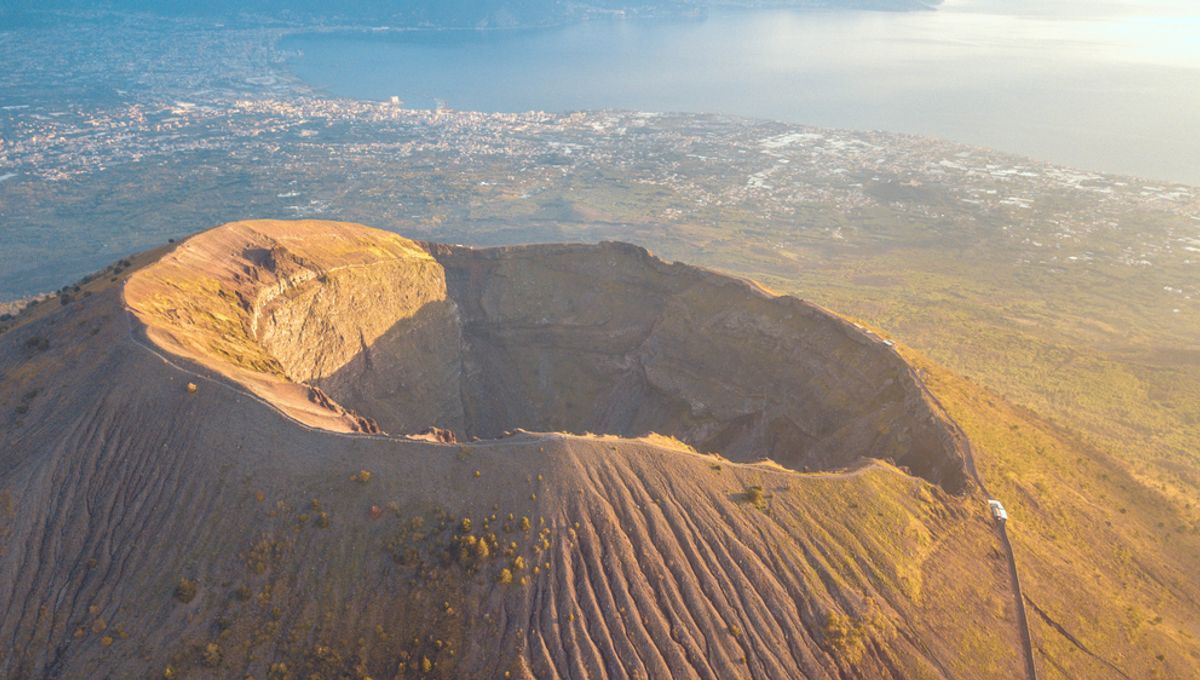
The volcanic eruption that obliterated the Roman town of Pompeii sent out an initial wave of hot gas that reached temperatures high enough to turn people’s brains to glass. According to a new study, this short-lived early burst of heat engulfed the nearby town of Herculaneum in a 550°C inferno (1,022°F), bringing instant death and destruction.
The study authors analyzed carbonized wood from multiple sites in Herculaneum, which was closer to Mount Vesuvius than Pompeii, in order to reconstruct the thermal events that followed the eruption in 79 CE. Based on the incomplete charring of certain samples, they were able to deduce that the town was initially blasted by a very brief yet unimaginably hot gas-particle flow known as a diluted pyroclastic density current (PDC).
Reporting their findings, the researchers explain that “the first diluted PDC entered in Herculaneum with a temperature exceeding 550°C recorded by samples collected at the Collegium Augustalium and the Decumanus Maximus [main street].”
“This early > 550°C event was later followed by the succession of [pyroclastic currents] which finally buried the town under 20-meter (66 feet) thick volcanic deposits. These later flows were characterized by lower temperature,” they write.
Due to the brief nature and extreme heat associated with this initial blast, the entire event left only a few decimeters of ash on the ground, which may explain why it had never been detected until now. However, the destructive power of diluted PDCs has been observed in the aftermath of more recent volcanic eruptions, such as that in Martinique in May 1902, when almost 30,000 people were instantaneously killed by a gas flow of this nature.
While direct evidence for the diluted PDC at Herculaneum had never previously been recorded, the study authors say numerous clues can be found in the remains of some of the victims. For instance, while many corpses at Pompeii were found frozen in “the typical post-mortem stance known as pugilistic attitude,” the bodies at Herculaneum were unable to adopt such a position because their soft tissue had been demolished by the intense heat.
The discovery of a well-preserved vitrified brain inside the skull of an individual at the Collegium Augustalium, meanwhile, provides yet more clarity. According to the researchers, a brain can only be turned to glass if “the heating event is short-lived so that the tissue is not fully vaporized,” while the preservation of this crystal cerebellum depended upon subsequent pyroclastic currents being cool enough to allow for the build-up of ash.
Having reconstructed the events that followed the eruption, the study authors say their findings may have implications for the modern inhabitants of nearby Naples should Vesuvius blow its top again. If another diluted PDC should result, then the researchers believe that the “potential for survival critically depends on the ability of shelters to prevent infiltration of the hot dusty gas.”
“This could allow people who may not had the chance to evacuate earlier to survive and wait for rescue,” they write.
The study is published in the journal Scientific Reports.
Source Link: Volcanic Gas Cloud Reaching A Scorching 550°C Turned Vesuvius Victims' Brains To Glass